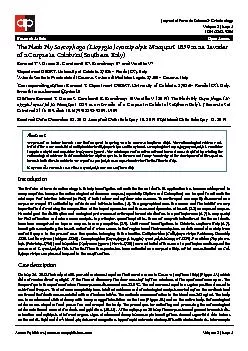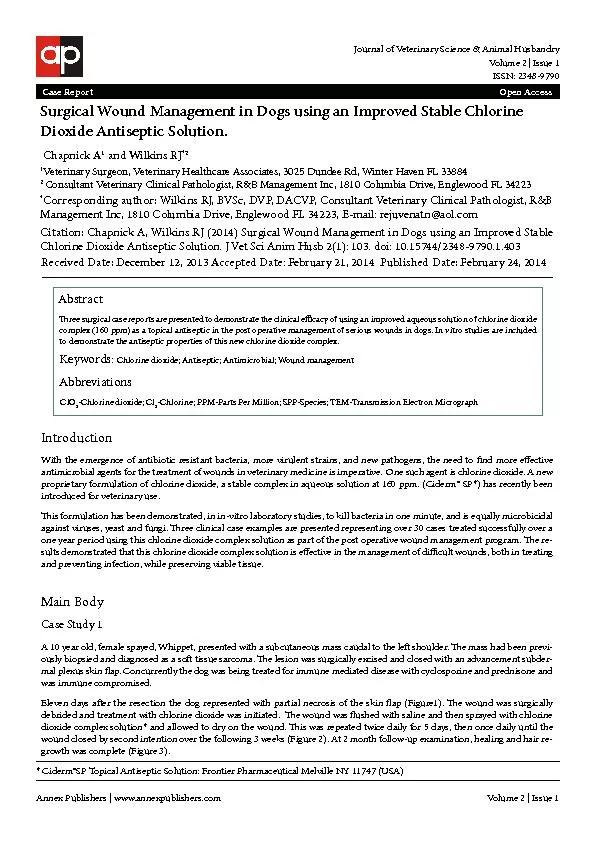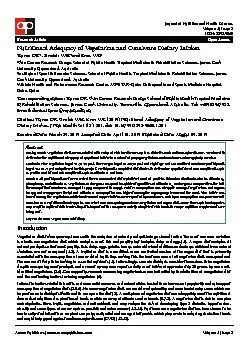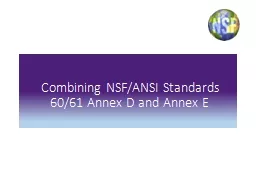PDF-Annex Publishers | www.annexpublishers.com Volume 2
Author : danika-pritchard | Published Date : 2015-08-18
AbstractWe present an indoor forensic case that occurred in spring 2013 in Cosenza southern Italy e entomological evidence collected at the scene consisted of Calliphoridae
Presentation Embed Code
Download Presentation
Download Presentation The PPT/PDF document "Annex Publishers | www.annexpublishers.c..." is the property of its rightful owner. Permission is granted to download and print the materials on this website for personal, non-commercial use only, and to display it on your personal computer provided you do not modify the materials and that you retain all copyright notices contained in the materials. By downloading content from our website, you accept the terms of this agreement.
Annex Publishers | www.annexpublishers.com Volume 2: Transcript
Download Rules Of Document
"Annex Publishers | www.annexpublishers.com Volume 2"The content belongs to its owner. You may download and print it for personal use, without modification, and keep all copyright notices. By downloading, you agree to these terms.
Related Documents














